What are three attributes that APBR queries from the application system cache module. (Choose Three)
Which two statements are correct about automated threat mitigation with Security Director? (Choose two.)
You want to deploy two vSRX instances in different public cloud providers to provide redundant security services for your network. Layer 2 connectivity between the two vSRX instances is not possible.
What would you configure on the vSRX instances to accomplish this task?
Exhibit:
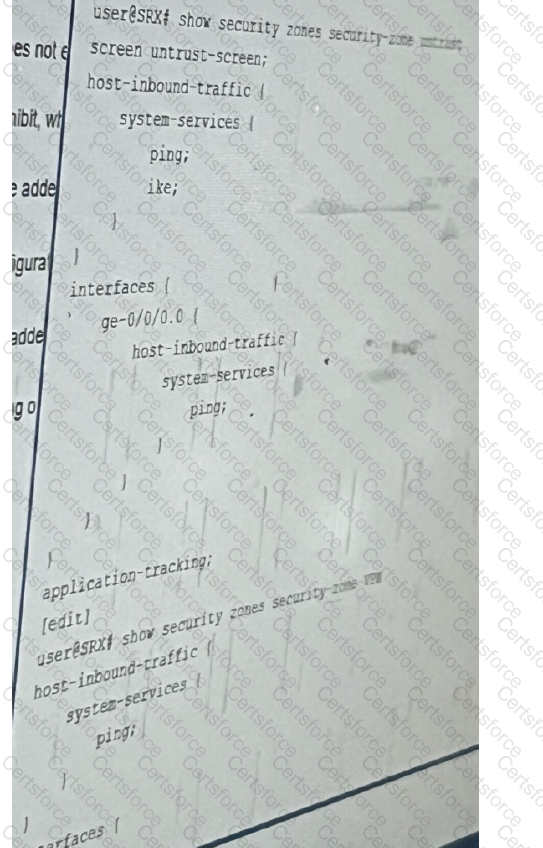
The Ipsec VPN does not establish when the peer initiates, but it does establish when the SRX
series device initiates. Referring to the exhibit, what will solve this problem?
You are using AutoVPN to deploy a hub-and-spoke VPN to connect your enterprise sites.
In this scenario, which two statements are true? (Choose two.)
You are asked to establish IBGP between two nodes, but the session is not established. To troubleshoot this problem, you configured trace options to monitor BGP protocol message exchanges.
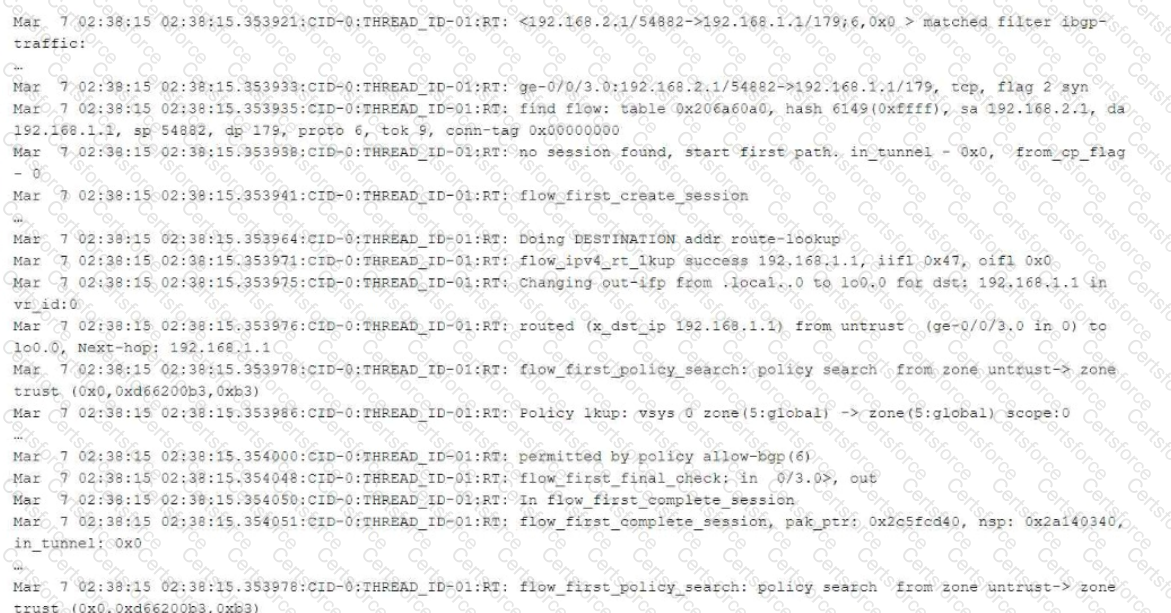
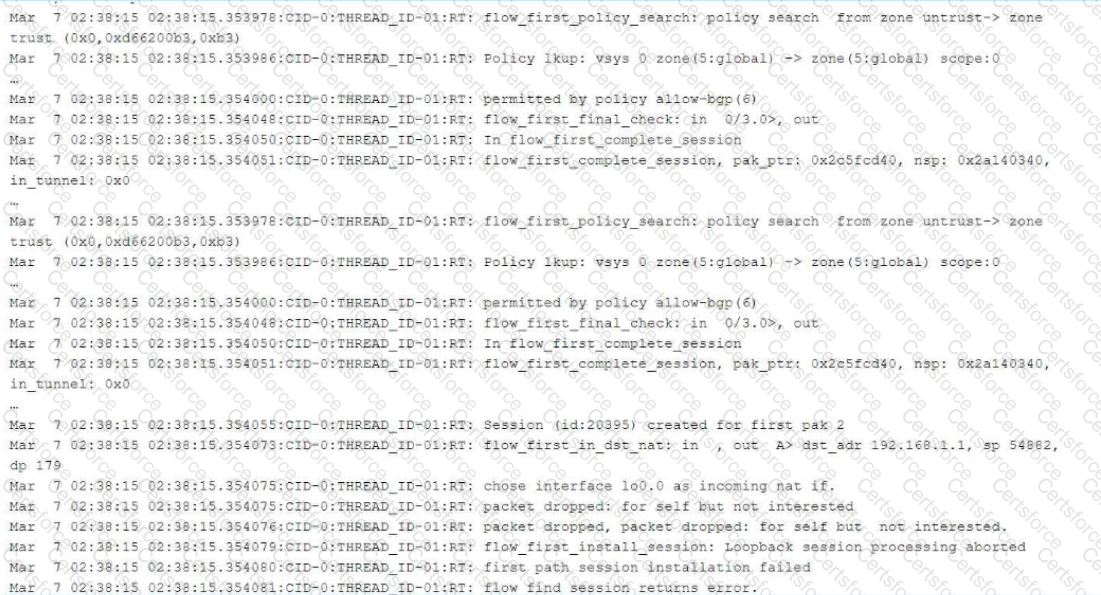
Referring to the exhibit, which action would solve the problem?
You are using trace options to troubleshoot a security policy on your SRX Series device.

Referring to the exhibit, which two statements are true? (Choose two.)
Your IPsec tunnel is configured with multiple security associations (SAs). Your SRX Series device supports the CoS-based IPsec VPNs with multiple IPsec SAs feature. You are asked to configure CoS for this tunnel.
Which two statements are true in this scenario? (Choose two.)
Exhibit:
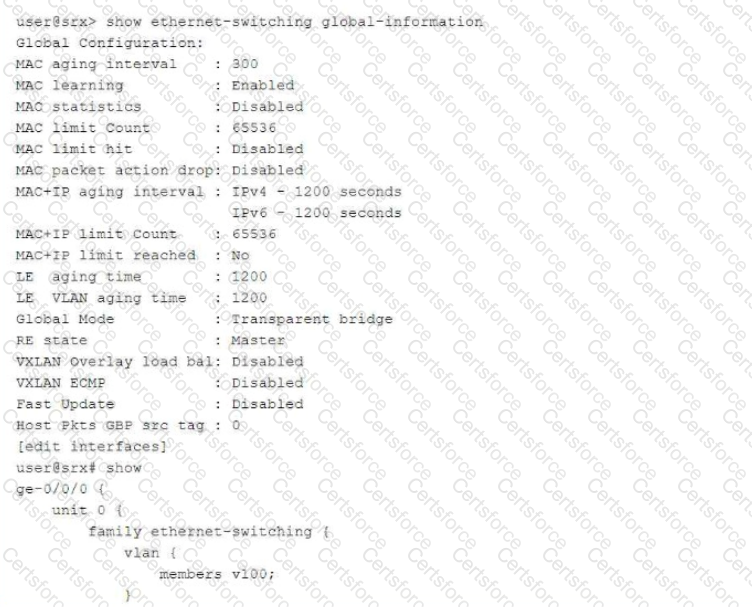
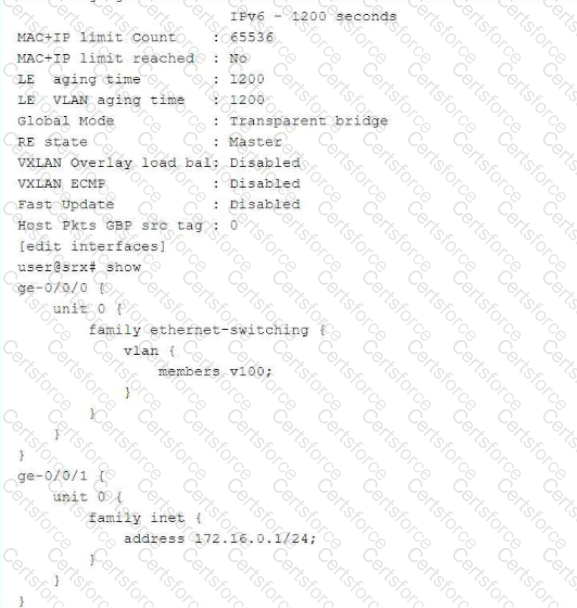
In which mode is the SRX Series device?
Referring to the exhibit,
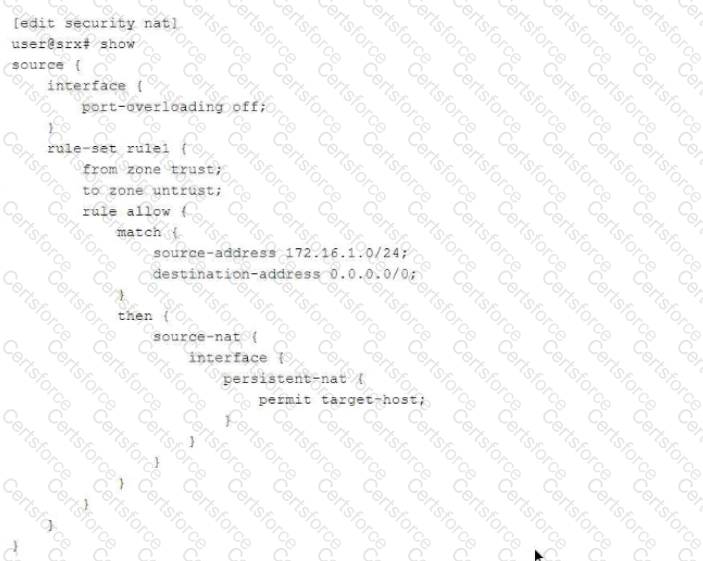
which two statements are correct about the NAT configuration? (Choose two.)